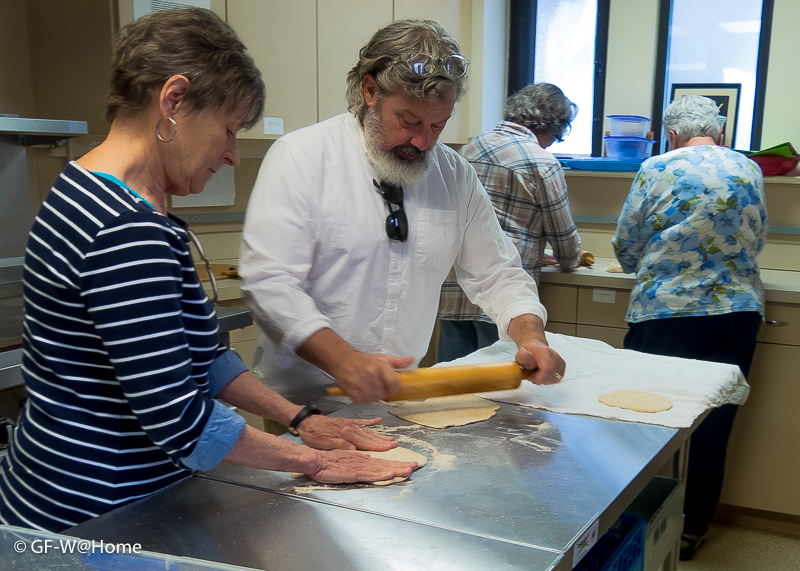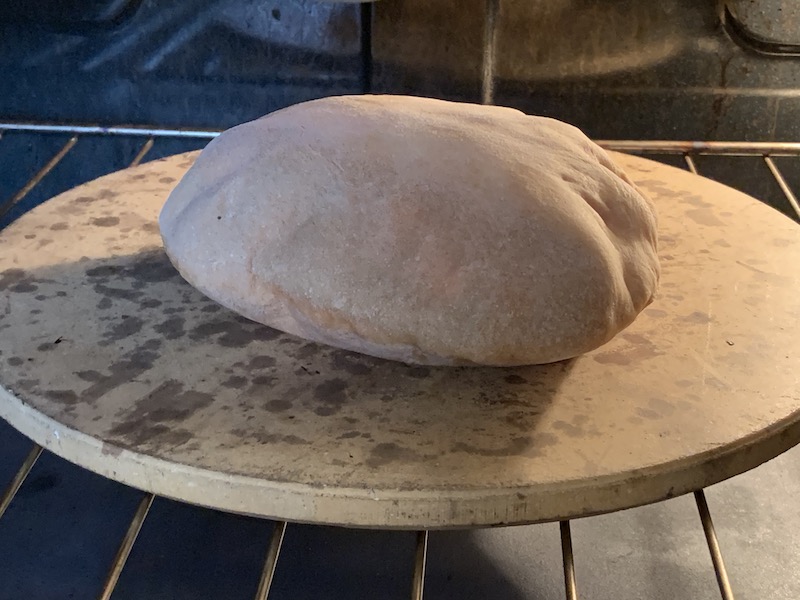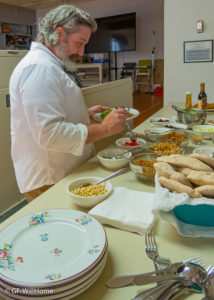What do farmers in Montana’s Golden Triangle today and those living in the Fertile Crescent nearly 3000 years ago have in common? Dry climate, grasslands, livestock, and grain and pulses… The tilling, planting, growing, harvesting, threshing, and milling processes still all take place. The only difference is the technology.
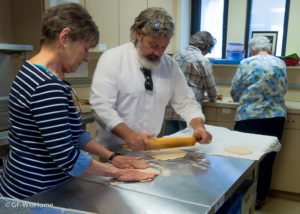 Recently, a small group gathered at St. Peter’s Episcopal Cathedral, Helena MT, for a workshop to learn about ancient grains grown three millennia ago in the Fertile Crescent (Israel, Palestine, Iraq, Syria, Lebanon, Egypt, and Jordan).
Recently, a small group gathered at St. Peter’s Episcopal Cathedral, Helena MT, for a workshop to learn about ancient grains grown three millennia ago in the Fertile Crescent (Israel, Palestine, Iraq, Syria, Lebanon, Egypt, and Jordan).
We baked flat breads and sampled cooked grains like einkorn, emmer, and spelt, which are descendants of those ancient grains and grown in Montana’s Golden Triangle today.
Written about 700BC, the Old Testament book of Isaiah (Chapter 28, Verses 23 – 29) describes the proper methods and tools farmers of the time used for planting and harvesting of spices and grains:
Isaiah, Chapter 28
23 Listen and hear my voice; pay attention and hear what I say.
24 When a farmer plows for planting, does he plow continually? Does he keep on breaking up and working the soil?
25 When he has leveled the surface, does he not sow caraway and scatter cumin? Does he not plant wheat in its place, barley in its plot, and spelt in its field?
26 His God instructs him and teaches him the right way.
27 Caraway is not threshed with a sledge, nor is the wheel of a cart rolled over cumin; caraway is beaten out with a rod, and cumin with a stick.
28 Grain must be ground to make bread; so one does not go on threshing it forever. The wheels of a threshing cart may be rolled over it, but one does not use horses to grind grain.
29 All this also comes from the Lord Almighty, whose plan is wonderful, whose wisdom is magnificent.
The Importance of Grain Crops
Around 20,000 years ago humans were gathering and consuming grass seed as a protein source. And approximately 10,000 years ago eight plants became the basis of the origins of agriculture (the Eight Founder Crops): einkorn wheat, emmer wheat, and barley; lentils, peas, chickpeas, and bitter vetch; and flax or linseed.
All of those crops are still grown today, though bitter vetch is not often consumed anymore. There is archeological evidence of spelt growth and consumption dating from 5,000 years ago.
Today: nearly half of the world’s protein intake comes from cereal grains (rice, wheat, corn, and barley).
The Wheat Family Tree
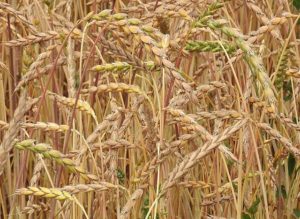
Source: Robert Flogaus-Faust
This file is licensed under the Creative Commons Attribution 4.0 International license.
The “family tree” of the genus Triticum (wheat) is divided genetically into three groups:
- Wild and cultivated einkorn (Haploids whose genes contain 14 chromosomes): considered to be the “Mother Wheat” and grown as early as 10,000 to 12,000 years ago.
- Wild and cultivated emmer and durum wheat (Diploids – the 28-chromosome group). Durum, the world’s second most widely cultivated wheat, is primarily used to make pasta.
- Spelt and all bread wheat (Tetraploids – the 42-chromosome group). Spelt is a hulled wheat – the hulls are tightly clasped around the grain and must be removed for consumption – and common wheat is “free threshing,” that is, the hulls fall off at maturity. All hexaploid grains are domesticated; none have been found growing in the wild.
The amount of protein and gluten in the wheat determines how the flour is ordinarily used. Pastry flour (from Soft Red or Soft White Wheat) contains weaker gluten, and is good for piecrust, cakes, and other baked goods. On the other hand, it takes a high-gluten flour – Hard Red or Hard White Wheat – to make bread that rises well and holds its shape. Durum Wheat, very high in protein and low in gluten, is “pasta wheat” used to make semolina flour.
Geography and climate influence where various kinds of grains grow best. The way we cook and bake evolved regionally with local grains and flours. Bread in Europe and the Americas, pasta in Italy, and flat and unleavened breads in the Middle East are examples of historic – and geographic – uses.
Baking with Spelt
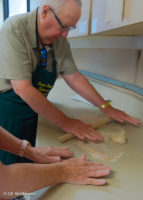
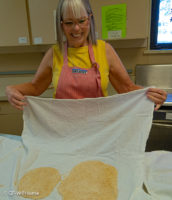
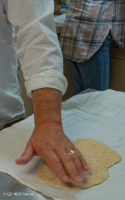 Spelt, a domesticated grain like bread wheat, is nuttier and more complex in flavor than standard whole-wheat flour. Comparable to a soft wheat, spelt has weaker gluten is best for pastry, quick breads, muffins, and cookies when used alone.
Spelt, a domesticated grain like bread wheat, is nuttier and more complex in flavor than standard whole-wheat flour. Comparable to a soft wheat, spelt has weaker gluten is best for pastry, quick breads, muffins, and cookies when used alone.
When making bread, combine 25% to 50% spelt flour with a high protein bread flour for structure and support. Using a stone ground whole grain spelt flour will affect hydration needed for bread dough. And be sure to NOT over knead or mix the dough so you don’t damage the gluten.
Heavy, rich, and nutritious bread was once a daily staple; today commercial industrialized bread, produced in fully automated factories, is full of chemical additives and preservatives and too much salt, and has too little nutritive value.
By reconnecting the broken links between local and regional grain farmers, the grain cleaners and millers who process their harvest, and the home and commercial bakers who make it into loaves, we can take back our daily bread.
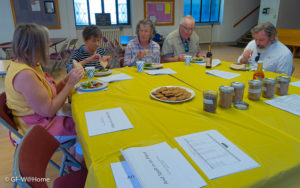
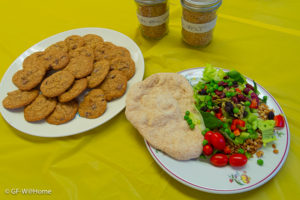 Eat whole grains and buy artisan bread. Seek out small local and regional grain growers. Buy a small mill and grind your own flour. Bake bread.
Eat whole grains and buy artisan bread. Seek out small local and regional grain growers. Buy a small mill and grind your own flour. Bake bread.
Celebrate the terroir of your daily bread!
Additional Information
We give a special thank you to St. Peter’s Episcopal Cathedral for letting us use the space and Rev. Donna Gleaves for her help organizing and presenting this workshop.
Additional thanks to Judy Cornell, Conservation Grains, Choteau MT, where spelt and a wide variety of other flour and grain is available.
Get the flat bread recipe our group baked here.
Get a copy of the handout from the workshop here.

